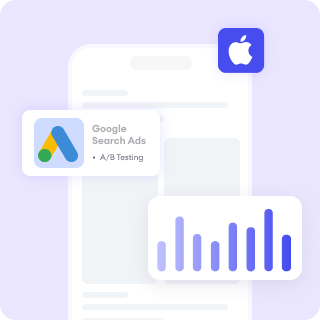Creating quality content is about crafting valuable, engaging, and search-engine-optimized material that connects with your audience while boosting your online presence.
Why Does Quality Content Matter?
Quality content is the backbone of any successful website. It:
- Improves SEO: Search engines like Google prioritize well-written, relevant, and authoritative content.
- Engages Visitors: High-quality content captures attention, reduces bounce rates, and increases time spent on your site.
- Builds Trust: Informative and accurate content establishes your brand as an authority in your niche.
- Drives Conversions: Great content leads to action—whether it’s signing up for a newsletter, purchasing a product, or sharing your page.
Whether you’re building a blog, an e-commerce site, or a corporate website, let's learn the important steps on how to create a quality content that stands out in the internet landscape!
1. Know Your Audience
First things first, you can’t create great content without knowing who you’re writing for. You should try to define your audience persona first by identifying their pain points, values, and online behavior. Use a tone and vocabulary that resonate with them. For example, if you are writing a blog related to Wuthering Waves, they might use terms like WuWa (Wuthering Waves). Or if you’re writing for tech enthusiasts, you should absolutely use that jargon. For a general audience, you may keep it simple and clear.
In order to know your audience, you need to learn and research them attentively. You may try to research your audience's:
- Demographics: Age, location, gender, etc.
- Interests: What topics resonate with them?
- Pain Points: What problems do they need solutions for?
- Preferred Tone: Should your content be professional, conversational, or something in between?
It would be best to create a detailed buyer persona to keep your content aligned with your audience’s needs.
2. Choose the Right Keywords
Search engine optimization (SEO) begins with keywords. These are the phrases your audience types into search engines to find information.
Here’s how to do it:
- Use tools like Google Keyword Planner, Ahrefs, or SEMRush to identify relevant keywords.
- Focus on long-tail keywords (e.g., “how to write engaging blog content”) for less competition and higher conversion rates.
- Prioritize intent: Are users looking to learn, buy, or compare?
After finding these highly relevant keywords, use the keywords naturally in headlines, subheadings, and throughout the content. Use keywords to write compelling meta descriptions to boost click-through rates, use keywords to describe images with alt text for accessibility and SEO benefits, and use internal links to guide readers to other useful content on your site.
3. Craft a Strong Headline
Your headline is the first impression readers and search engines get. Make it as clear as possible, use primary keywords naturally(avoid keyword stuffing), and spark curiosity without resorting to clickbait.
A headline like “How to Boost Your Website Traffic in 7 Easy Steps” is far more effective than something vague or overly sensational.
Remember that a great headline is Catchy, Informative, and Optimized!
- Catchy: Grab attention immediately.
- Informative: Clearly convey the topic of your content.
- Optimized: Include your primary keyword.
4. Focus on Readability
Your content should be easy to read and visually appealing to keep your reader or audience engaged.
Here's how to make it reader-friendly:
- Use Short Paragraphs: Break up large blocks of text.
- Incorporate Subheadings: Help readers skim through sections easily.
- Bullet Points and Lists: Highlight key information quickly.
- Add Visuals: Use images, videos, and infographics to complement your text.
Tell relatable stories, pose questions to encourage interaction, and include visuals like images, infographics, or videos to enhance depth and break up text. You can also use tools like Grammarly to help you ensure readability and clarity.
5. Prioritize Value Over Quantity
Quality content provides value by being:
- Informative: Answer your audience's questions thoroughly.
- Unique: Offer insights or perspectives that aren’t easily found elsewhere.
- Actionable: Include tips, steps, or advice your audience can immediately use.
Example: Instead of just saying, “Write a good introduction,” explain how to craft one by including hooks, context, and clear thesis statements.
6. Optimize for SEO
Even the best content won’t perform well if it’s not optimized for search engine. So make sure to keep these optimized!
- Meta Descriptions: Write concise summaries for each page.
- Internal Linking: Link to other relevant pages on your site.
- External Linking: Link to authoritative sources to boost credibility.
- Alt Text for Images: Describe images for accessibility and SEO.
- Mobile Optimization: Ensure your content looks great on all devices.
- How To Write Meta Descriptions For Better CTR
- How To Master Internal Linking For Your Website
- How Relevant Is Alt Text to SEO?
- How To Analyze Backlink Quality
7. Proofread and Edit
Quality content means that it is error-free. However, as a human, we might have made some mistakes along the way. So after writing your content, make sure to take some time to:
- Check grammar and spelling.
- Eliminate unnecessary fluff.
- Ensure formatting is consistent.
- Verify facts and sources.
Sometimes it also helps to read your content out loud to catch awkward phrasing or overlooked errors.
8. Encourage Engagement
Did you know that engaging content invites readers to interact?
Try to encourage the interaction by:
- Asking questions within the text.
- Adding call-to-action buttons (e.g., “Learn More,” “Sign Up Today”).
- Including social sharing buttons to social media for increased reach.
9. Monitor and Update
Don't forget to use tools like Google Analytics to track performance and identify areas for improvement. You should also consider to update older content regularly to keep it relevant and accurate. Some people say that you don't have to create new content to improve your rankings, it is enough for you to just update the content with a new one. So try it out!
Final Thoughts
Writing quality content for a website takes time, research, and effort, but the results are worth it. So try your best to create content that not only ranks well but also resonates with readers.
Improve your website performance with FoxAdvert!
If you are looking forward to improving your website performance, our professional team of SEO experts at FoxAdvert can help you. Contact us today to start your journey 😊











